The Naval Show of Force That Wasn't
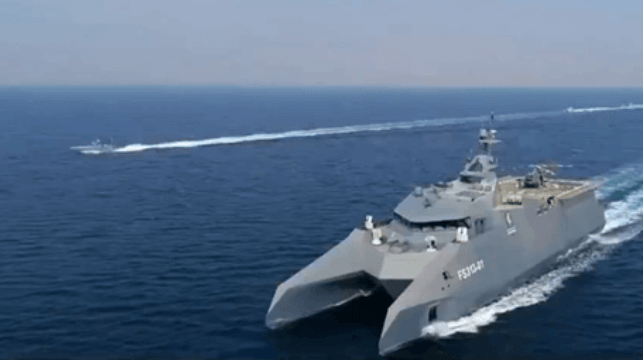
Several weeks ago, the Iranian authorities announced that the IRGC Navy (Nesda) would hold a major exercise in the Straits of Hormuz on January 11, involving 300 ‘combat vessels’, to be followed by an exercise January 18-23 within the Gulf, all to be concluded by the IRGC’s ‘largest ever fleet review’ on January 27.
The UK Maritime Trade Organisation (UKMTO) team in Dubai has associated two activities with what it thought might be the delayed start of this major exercise. The US-flagged container ship Liberty Power received an instruction on January 24 by VHF radio from a small craft, ordering it to change course for Iranian waters, an instruction which it ignored. Other vessels in the Northern Arabian Gulf have also received similar VHF radio challenges. While such activity might normally be associated with piracy or IRGC seizure operations, this may have been an indicator that the exercise had begun in the central and northern waters of the Gulf, confirmed when officially-sanctioned social media sites began posting video of exercise activity.
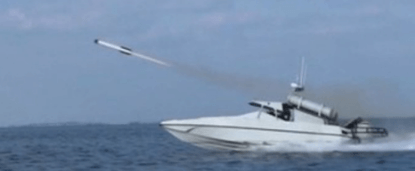
Khowsar missile being fired from a Nesda speedboat (Iranian Ministry of Defense)
This activity featured large numbers of speedboats firing Khowsar 222 missiles. The Khowsar is believed to be based on the Chinese TL-10, designed specifically for export to Iran by the Hongdu Aviation Industry Corporation. The missile is a ‘fire and forget’ system designed to attack smaller shipping targets, with its own autonomous seeker system and a range of up to 12 miles. A Khowsar missile, supplied by Iran to Hezbollah, is believed to have been used in the fatal attack against the Israeli corvette INS Hanit in June 2006.
Marines were seen in another video landing on the deck of a civilian tanker, reminiscent of the Houthis’ seizure of the MV Galaxy Leader, whose crewmembers were finally released after 14 months in Houthi activity this week.
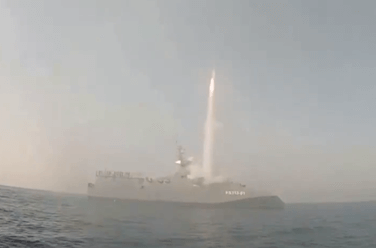
Shahid Soleimani (FS313-01) firing a Navab anti-aircraft missile from a forward vertical launch tube (Iranian Ministry of Defense)
Also featured was the Nesda’s missile corvette Shahid Soleimani (FS313-01), seen firing a short range Navab surface to air missile from its vertical firing tubes. The Navab has an infrared autonomous seeker and a range of 10 miles. Nesda had announced that two additions to the same name missile corvette class, the Shahid Bahman Baqeri and the Shahid Rais Ali Delvari, were to join the fleet during the exercise, but neither have been spotted so far, though the Shahid Rais Ali Delvari (FS313-04) was unveiled last week in pictures issued by the Iranian Ministry of Defense.
Besides now routine coverage of drones firing missiles, the only other notable development seen so far has been a new system for deploying sea mines, using a Fajr-5 rocket with a 50 mile range. This would be an expensive method of deploying a single free-floating mine, but could be useful in an emergency situation or to fill a gap in a minefield.
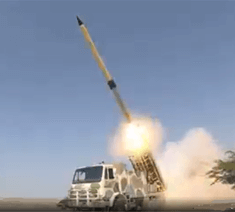 Sea mine being deployed as a warhead on a Fajr-5 rocket (left, Iranian Ministry of Defence)
Sea mine being deployed as a warhead on a Fajr-5 rocket (left, Iranian Ministry of Defence)
As part of the run-up to the exercise, the Nesda made much of their underground storage complexes, in which speedboats and coastal defense missiles could be stored on trailers ready for rapid deployment. The IRGC’s promotional videos did not disclose the locations of these complexes, but two have subsequently been identified close to known Nesda bases, and visible in Google Earth at Bushehr (28.881686N 50.842836E and Asaluyeh (27.353557N 52.623110E).
The exercise is believed to have concluded next day, January 25. The Nesda commander Rear Admiral Alireza Tangsiri, speaking in Bushehr on January 26, said all goals set for the exercise had been achieved.
Meanwhile, the two largest ships in the Nesda, the tankers converted to drone carriers Shahid Mahdavi (C110-3) and Shahid Bagheri (C110-4), the latter easily identified by its angled flight deck, together with a third unidentified but naval vessel, have been seen at anchor in the roadstead off Bandar Abbas, their positions unchanged save for the swing of the wind and tide since January 7. These vessels could have been expected to form the centerpiece of any large-scale at-sea exercise. The only evidence of unusual activity has been the presence close by of what may be a large barge which could act as a viewing platform for a final exercise fleet review, which the Nesda previously announced would take place on January 28.
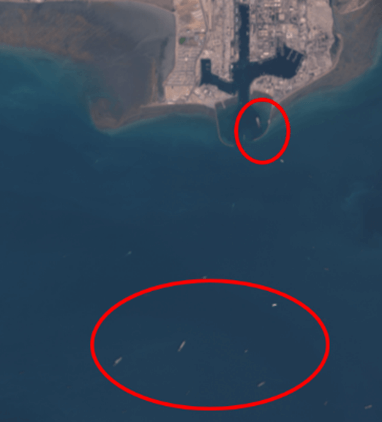
Situation normal: Bandar Abbas Roads January 24, with three Nesda naval vessels and a possible viewing platform to the south, and IRINS Makran on its usual pier in the outer harbour (left, Landsat-8/Jonathan Campbell-James)
Throughout the exercise, activity and ships within Bandar Abbas harbor - where the regular Iranian navy has the dominant presence - are reflective of normal routine. The large logistic vessel IRINS Makran (K441) has not been seen to leave its pier in the outer harbor during this period. What is believed to be the 100th Naval Flotilla, consisting of IRINS Bushehr (K422) and IRINS Lavan (L502) cast off from the harbor on January 26 on the regular winter training cruise with cadets aboard.
The delay and apparent curtailment of what had been announced as a much longer and larger scale exercise may be a reflection of Iranian nervousness at present about doing anything too bombastic or belligerent before the newly-installed president of the United States makes his position clearer on how he intends to approach Iran’s threatening behavior.
On land however, there is strong evidence of considerable concern on the part of the IRGC regarding the internal security situation in the country. Under the guise of the Great Prophet-19 exercise, large-scale internal security sweeps have been taking place in the southeast against Baluch separatists, in the northeast against infiltrators from Afghanistan, in the northwest against Kurdish separatists, and also in the traditionally restive Arabic-speaking region of Khuzestan. A stream of IRGC combat casualties has been announced. A major internal security exercise that took place in Tehran on January 10 had the appearance of an exercise in intimidation rather than training. The Iran International website noted that rather than an expected 110,000 Basij volunteer participants, fewer than half that number turned up, many of whom were Afghan refugees.
